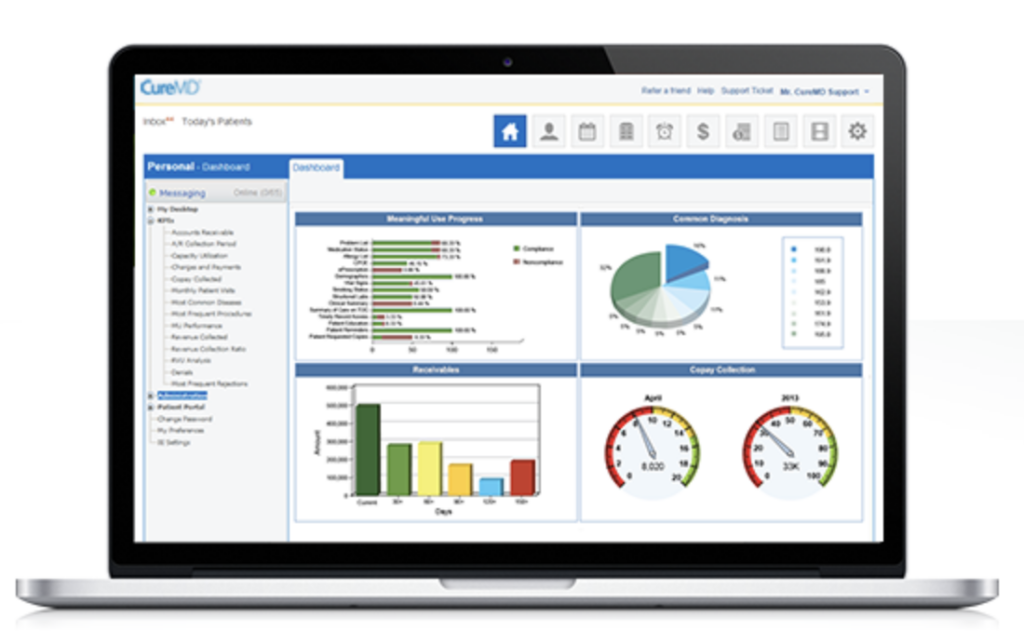The healthcare industry is undergoing a rapid transformation, driven by cutting-edge medical devices that enhance patient outcomes, streamline clinical workflows, and improve overall efficiency. As we move into 2025, groundbreaking innovations are set to redefine how healthcare professionals diagnose, monitor, and treat patients, making healthcare more accessible, precise, and patient-centric.
One of the most significant advancements is the rise of AI-powered diagnostic tools, which leverage machine learning to detect diseases with unparalleled accuracy. Wearable health monitors, equipped with real-time data tracking, are empowering patients to take control of their health while enabling physicians to provide proactive care. Robotics and automation in surgery are making procedures safer and more precise, reducing recovery times and complications.
Additionally, 3D-printed implants and prosthetics are revolutionizing personalized medicine, offering customized solutions for patients in need of reconstructive surgeries. Telehealth devices and remote patient monitoring systems are expanding access to care, especially for individuals in remote or underserved areas. Meanwhile, smart drug delivery systems ensure precise medication dosing, enhancing treatment effectiveness and reducing side effects.
These innovations, along with several others, are reshaping the healthcare landscape, making it more efficient, data-driven, and patient-focused. This article explores the top 10 medical devices that will revolutionize patient care in 2025.
- Artificial Intelligence-Powered Diagnostic Tools
Artificial intelligence (AI) has become a game-changer in medical diagnostics. AI-powered imaging and diagnostic tools assist radiologists and physicians in detecting diseases with unprecedented accuracy. These tools use deep learning algorithms to analyze medical images, identify anomalies, and provide rapid, data-driven insights. AI-driven diagnostics have significantly reduced human error and accelerated early disease detection, particularly in oncology, neurology, and cardiology.
- Wearable Health Monitors
Wearable technology has advanced beyond simple fitness trackers. In 2025, smart wearables are capable of continuously monitoring vital signs such as heart rate, blood pressure, blood glucose levels, and oxygen saturation. These devices provide real-time data to healthcare providers, enabling proactive interventions for patients with chronic conditions such as diabetes and hypertension. Moreover, they integrate seamlessly with electronic health records (EHRs), including pediatric EHR, ensuring comprehensive patient monitoring.
- Smart Insulin Pens and Glucose Monitors
For diabetes management, smart insulin pens and continuous glucose monitors (CGMs) are revolutionizing care. These devices offer automated insulin delivery, real-time glucose tracking, and alerts for abnormal sugar levels. With AI integration, they can predict fluctuations and suggest insulin dosages, improving glycemic control and reducing hospital visits for diabetic patients.
- Remote Patient Monitoring (RPM) Systems
Telehealth and remote patient monitoring systems have gained prominence in recent years, and their significance continues to grow in 2025. RPM devices collect patient data remotely, allowing healthcare providers to track progress and make informed treatment decisions. These devices are particularly beneficial for elderly patients, post-operative care, and chronic disease management. Additionally, RPM systems support hospitals in optimizing revenue cycle management services by reducing readmission rates and enhancing patient adherence.
- Robotic-Assisted Surgery Systems
Robotic-assisted surgical systems have transformed minimally invasive procedures, offering enhanced precision, flexibility, and control. In 2025, advanced robotic systems assist surgeons in performing complex operations with improved accuracy and minimal trauma to patients. These innovations lead to shorter recovery times, reduced post-operative complications, and better patient outcomes.
- 3D Printing in Prosthetics and Implants
3D printing technology has made significant strides in personalized medicine. Custom-made prosthetics, dental implants, and orthopedic implants are now more accessible and cost-effective. This technology allows for precise anatomical replication, ensuring a perfect fit for each patient. Additionally, bio-printing advancements enable the creation of tissue and organ scaffolds, paving the way for regenerative medicine.
- Smart Hospital Beds
Smart hospital beds equipped with sensors and IoT technology enhance patient comfort and care. These beds monitor vital signs, adjust automatically to reduce pressure ulcers, and alert healthcare staff to patient movements. Such innovations improve patient safety, reduce workload for nurses, and enhance hospital efficiency, ultimately contributing to better healthcare delivery.
- Implantable Drug Delivery Systems
Implantable drug delivery systems are transforming medication administration by offering targeted, controlled drug release. These devices ensure precise dosing, reducing side effects and enhancing treatment efficacy. Patients with chronic conditions such as Parkinson’s disease, epilepsy, and chronic pain benefit from these implantable systems, which provide continuous, long-term therapy without frequent hospital visits.
- Augmented Reality (AR) for Medical Training and Surgery
Augmented reality (AR) is revolutionizing medical training and surgical procedures. AR-powered devices provide real-time 3D visualization of anatomical structures, aiding in complex surgeries. Surgeons can overlay critical patient data onto their field of view, improving precision and reducing errors. Additionally, AR enhances medical education by offering immersive, hands-on training experiences for students and professionals.
- AI-Powered Chatbots and Virtual Health Assistants
AI-driven chatbots and virtual health assistants are improving patient engagement and healthcare accessibility. These tools offer instant medical advice, appointment scheduling, and medication reminders. They also support mental health initiatives by providing guided therapy sessions and emotional support. By reducing the burden on healthcare staff, AI assistants streamline patient communication and improve overall healthcare efficiency.
Conclusion
The advancements in medical technology in 2025 are set to redefine patient care by improving diagnostics, treatment, and overall healthcare efficiency. From AI-powered diagnostic tools to implantable drug delivery systems, these innovations promise better health outcomes, cost savings, and improved patient experiences. Additionally, the integration of these devices with revenue cycle management services and pediatric EMR ensures seamless healthcare operations, making quality care more accessible and effective.
As technology continues to evolve, embracing these cutting-edge medical devices will be crucial for healthcare providers to enhance patient care and stay ahead in the ever-changing medical landscape.



